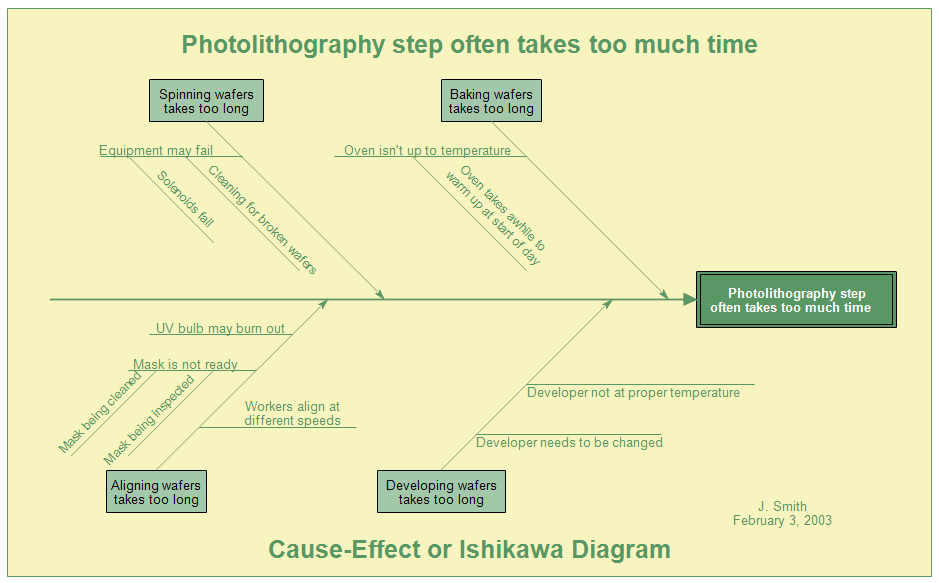Cause-and-effect diagrams are also called Ishikawa diagrams after their creator,
Dr. Kaoru Ishikawa. These diagrams are used in identifying and organizing the
possible causes of a problem. They are sometimes referred to as fishbone
diagrams because they resemble the skeleton of a fish, with a head, spine, and
bones.
The problem you are investigating is placed in a box on the right side of the
fishbone diagram. It is labeled Effect in the diagram above.
The spine is the large arrow going horizontally from left to right and
pointing to the Effect box on the right.
The lines diagonally pointing to the spine are the main categories of
potential causes of the problem.
Connecting to the central spine are the bones. These bones are all the
possible causes of the problem. The smallest bones are the most specific
causes. The bones are drawn in groups of related causes.

Professional Flowcharting Software
|
|
|
|
|
|
|
|
